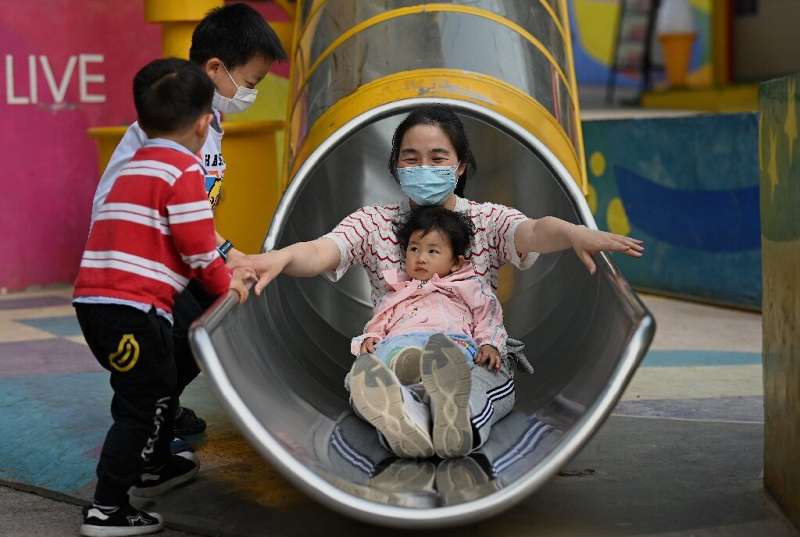
China will allow couples to have three children after a census showed its population is rapidly ageing, state media said Monday, further unwinding four decades of strict family planning controls in the world’s most populous nation which have strangled the birthrate.
In 2016 China relaxed its controversial “one-child policy”—one of the world’s strictest family planning regulations—to a “two-child policy” due to widespread concerns over an ageing workforce and economic stagnation.
Despite government efforts to encourage couples to have children, China’s annual births have continued to plummet to a record low of 12 million in 2020, the National Bureau of Statistics said last month, as the cost of living rises and women increasingly make their own family planning choices.
The slump threatens a demographic crisis which has alarmed the ruling Communist Party headed by President Xi Jinping, booking in a shortage of young workers to drive an economy experts say will by 2050 will have to support hundreds of millions of elderly.
A Monday meeting of the elite Politburo leadership committee hosted by Xi announced a further loosening of the state’s control over the size of families.
“To actively respond to the ageing population … a couple can have three children,” state media Xinhua reported.
The Politburo meeting also promised “accompanying support measures” that are also “conducive to the country’s population structure”, though these were left unspecified.
Skewed gender balance
China’s fertility rate stands at 1.3—below the level needed to maintain a stable population, the National Bureau of Statistics revealed.
The once-in-a-decade 2020 census results published last month also showed that China’s population grew at its slowest rate since the 1960s, reaching 1.41 billion.
China’s gender balance has also been skewed by decades of the one-child policy, and a traditional social preference for boys which prompted a generation of sex-selective abortions and abandoned baby girls.
Although the policy has been relaxed in the last few years, this has not prompted the baby boom policymakers had hoped for.
Falling marriage rates in recent years have played out in slower birth rates, as have rising costs of living and increasingly empowered and educated women delaying or avoiding childbirth.
It may be too late to reverse the downward trend, some experts say.
“Most families have a preference for few children now—akin to the rest of Northeast Asia,” said Lauren Johnston, a China economics and demography researcher at SOAS University of London.
“By the time of the next census will there be many third children? Probably few.”
As China ages, there are significant economic and political implications for the world’s second biggest economy.
“It’s reasonable for the government to introduce policies to spur childbirths in the face of huge population pressure,” said 31-year-old Vivien, who is married.
“Having children is a citizen’s contribution to their country.”
A third of Chinese are forecast to be elderly by 2050, heaping huge pressure on the state to provide pensions and healthcare.
But for a younger generation of women, living in the hyper-competitive normality of modern China’s cities where good work and accommodation are hard to find, the relaxation may have little attraction.
Source: Read Full Article